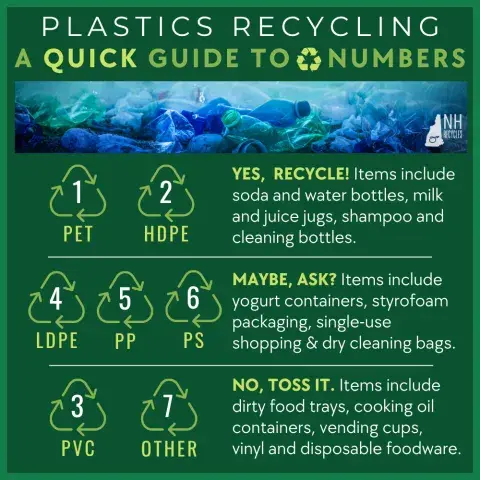
♻️ RESOURCE: A QUICK GUIDE TO PLASTICS RECYCLING ♻️
We get it - those recycling numbers on the bottom of plastic items can be confusing. Those numbers are a CLUE to the type of resin a plastic container is made out of.
Here is a quick, GENERAL guide to plastics recycling:
- YES, RECYCLE! #1 and #2 plastics such as soda and water bottles, milk and juice jugs, shampoo and cleaning bottles.
- MAYBE, ASK: #4, #5, and #6 plastics such as shopping and dry cleaning bags (things you can stretch with your thumbs - #4), yogurt containers (#5) and in some towns styrofoam (#6) might be accepted either at your transfer station or a local drop off location like the grocery store.
- NO, TOSS IT. #3 and #7 plastics such as flammable oil containers, vending cups, pvc, vinyl products, and products made of a mixture of plastic resins.
For more information about plastic recycling and plastic recycling codes: https://learn.eartheasy.com/arti.../plastics-by-the-numbers/
Reminder:
1. When in doubt, throw it out - better than contaminating a recycling load!
2. If it's a #1 but NOT a bottle or jug, ASK before you recycle (those sneaky clamshell food containers are often NOT recyclable, even though they are a #1 - ASK before you recycle them!)
3. Decreasing the amount of single-use plastic you use will always be better than recycling plastic. FIRST reduce/refuse, THEN reuse, FINAL option is to recycle.
- This material is based upon work supported under a grant by the Rural Utilities Service, United States Department of Agriculture. Any opinions, findings, and conclusions or recommendations expressed in this material are solely the responsibility of the authors and do not necessarily represent the official views of the Rural Utilities Service. Rural Community Assistance Partnership, Inc., is an equal opportunity provider and employer.
